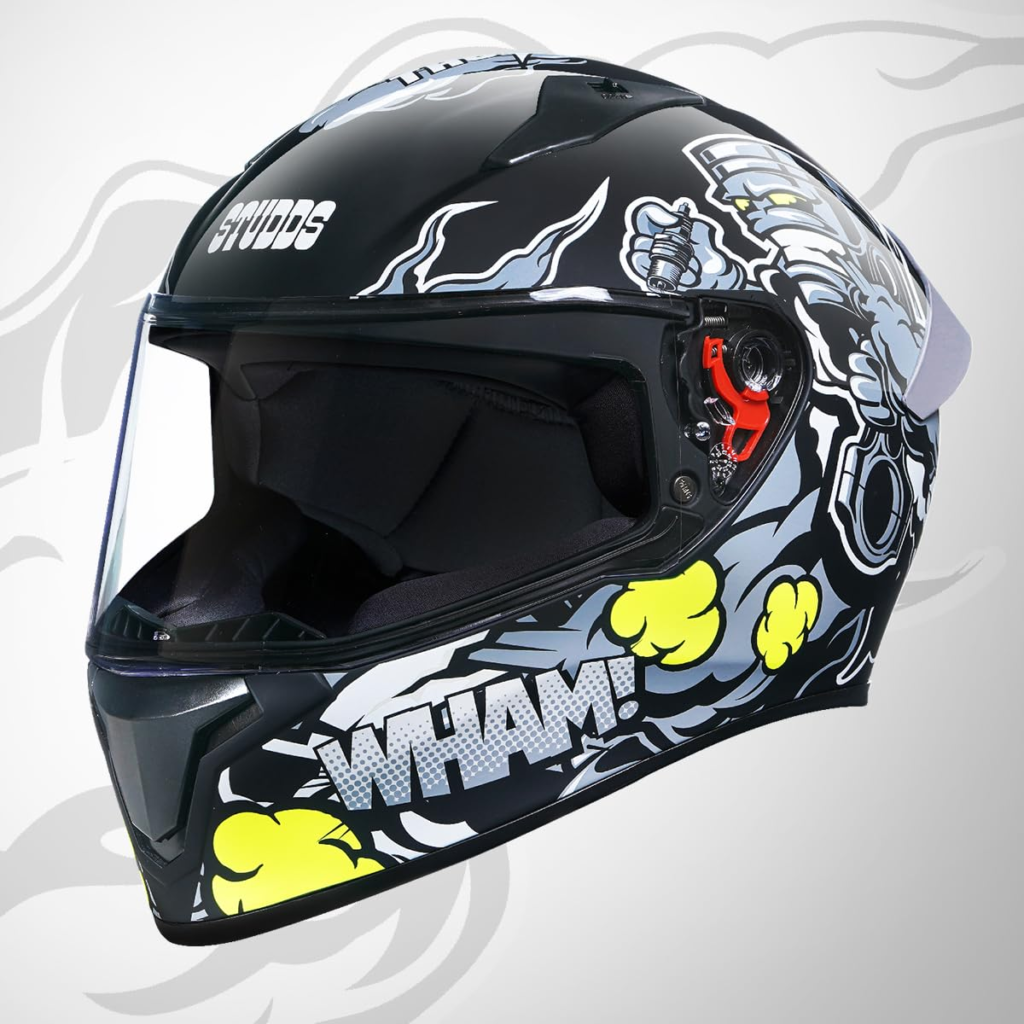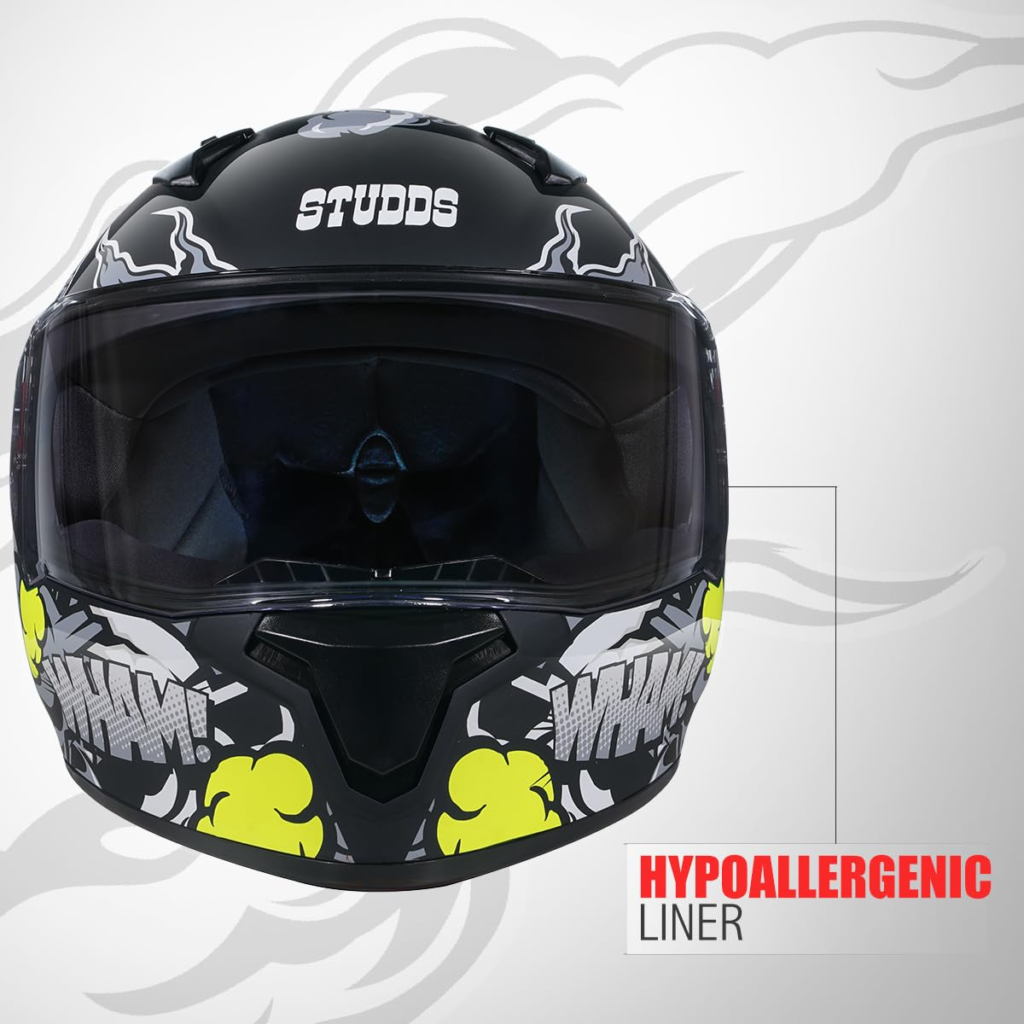The Studds Thunder D10 emerges as a contender for budget-conscious riders seeking a basic yet functional full-face helmet. This review dives into the specifications of the Thunder D10, explores its potential advantages and disadvantages, and helps you decide if it aligns with your motorcycle helmet needs.

Specifications
| Feature | Description |
|---|---|
| Shell Material | Plastic |
| Weight | Approximately 1.3 kilograms (1kg 300g) |
| Visor | Quick Release Mechanism |
| Liner | Hypoallergenic and Replaceable |
| Ventilation System | Dynamic System with Air Vents and Exhausts (Number of vents not explicitly specified) |
| Closure | Quick Release Chin Strap |
| Size | Not mentioned (Verify availability of sizes with retailer) |
| Color | Black N4 (Other colors might be available depending on retailer) |
Pros
Budget-Friendly: The Studds Thunder D10 positions itself as a more affordable option compared to some full-face helmets.
Comfort Features: The hypoallergenic liner and quick-release chin strap can potentially enhance comfort and ease of use.
Aerodynamic Design: The aerodynamic design can improve stability and reduce wind noise at higher speeds.
UV Resistant Paint: The UV resistant paint helps protect the helmet’s finish from sun damage.
Quick Release Visor: The quick-release visor mechanism simplifies visor removal and replacement.
Cons:
Limited Information on Ventilation: The description doesn’t mention the number of vents, making it difficult to assess ventilation effectiveness, especially in hot weather conditions.
Unknown Shell Material Details: While plastic is mentioned, the specific type of plastic used for the shell remains unclear, potentially impacting impact resistance.
Uncertain Safety Certifications: Safety certifications are not explicitly mentioned in the description. Consider this a significant factor if safety is a top priority.

Verdict:
The Studds Thunder D10 offers a budget-friendly entry point into the world of full-face helmets, with features like a comfortable liner, quick-release visor, and aerodynamic design. However, the lack of information on ventilation, shell specifics, and safety certifications are major drawbacks.
